With Blood Bowl tournaments coming back to Warhammer World and accompanying stipulation about using GW models I thought it would be an ideal time to add another article about converting.
Differentiating Positionals
One of the great things about playing with tabletop miniatures is the variety in their appearance. Not only are there lots of different companies making teams but you can also convert your players from other sources to make them truly unique. The Blood Bowl world is less serious than GW’s other properties, which opens up even more possibilities.
I have already looked at Blood Bowl specific conversions, in this article I will explore methods of distinguishing the various positions through both conversion and paint scheme.
Why do this?
Some coaches are lucky enough to have a gaming group where everyone knows each other and the make up and skills of the opposing teams is almost as familiar as their own. When facing an unfamiliar opponent the game can be slowed down if the other coach has to continually ask what each model represents. Worse it may ferment bad blood if the opposing coach makes a key error after confusing a ST2 catcher with a ST3 Blitzer and loses the game because of this.
Another advantage of this is that you can take an existing team and with some of the tips below personalise them to your own designs.
Multi-race teams
I am going to primarily focus on teams that have models of the same race that play in different positons. For some teams each position is a distinct race with clear differences, some key examples are; undead/necros, the 4 chaos teams, lizardmen and the stunty teams. There is some distinction needed with these examples, for instance a Skeleton and Wight, but most of the time they have very obvious differences. If making a Lizardman team you just need small, medium and a large model to represent the Skinks, Saurus and Kroxigor respectively.
The techniques used for distinguishing positionals can still be used in cases where models are of different races. Often they will have roles that are equivalent to certain positions; ghouls as runners or catchers, saurus as blocker or blitzers etc.
The “counts as” rule is something I have long been a huge fan of. If you want a team of steam powered robots then you can have a lot of fun making up the stats and cool rules for them. However you will have to get your opponent’s permission to use them and won’t be able to take them to tournaments. If instead you use the closest equivalent team (say khemri) then you shouldn’t have any issues using them in tournaments or against strangers. Just ensure that it is clear what each model represents, “these robots with the red eyes are tomb guardians, blue eyes are linemen and the large ones on 40mm bases are thro-ras” would be a little silly.
This does open up a lot more scope for all sorts of interesting and wacky conversions.
This Nurgle team was converted from a diverse array of figures. None of these were standard Blood Bowl models, but their key characteristic; heavy armour for warriors, horns for Pestigors etc, make them easy to differentiate from each other.
Positions and categorisation
Back in the 2nd edition days pretty much every player fell into 1 of 5 categories; Blocker, Blitzer, Lineman, Thrower and Catcher. These 5 positions all had clearly defined roles within the team and characteristics associated with them.
With the introduction of 3rd edition there was a deliberate effort to distinguish the teams from each other and the runner, a new player type was added. There were also several unique racial specific players added to some teams. These were generally based on a unit from their respective Warhammer army. This was accompanied by a deliberate redesign of the models to more closely resemble their fantasy equivalents. There are varying opinions on which look was the best and much of that comes down to when someone got into the game. The good thing is it opens up more options and choice and there is certainly not 1 specific way that a Blood Bowl player has to look.
I will go through the main positionals in detail, covering a variety of ways they can be represented.
- Model Choice – An easy way to separate the positions from each other is to use models from different units from the equivalent fantasy or sci-fi army. If you already have an army then that is a great basis to start the team. If not it will be cheaper and easier to get spare models or bits from e-bay or other people as most players tend to end up with a few leftover models/bitz here and there.
- Colouring/decoration – The 2nd edition boxed set came with a human and orc team, both made up of identical models. The only way to distinguish the positional players was through coloured base rings. This can be incorporated into your team as an extra way of defining the positions. The colours used were; Grey (linemen), Green (Blockers), Red (Blitzers), White (Throwers) and Yellow (Catchers). Decoration is another way to help certain players stand out from the rest of the team.
- Poses – The position names are all pretty descriptive of their role on the pitch. Blood Bowl players are not known for their imagination so I can see head coaches telling them to block, blitz, run, catch and throw. If your catchers are catching, runners running, etc. then it makes it much easier to see what they are.
- Armour/Equipment – Many players have more of less armour depending on their role and it helps to show this on the model, human catchers shouldn’t wear more armour than dwarf blockers for instance. The equipment they carry is another tool and clear way to distinguish players. You can often take it straight from an existing model which makes for a much easier conversion.
I will illustrate each position, starting with a few pics of players from various teams and also using specific models to illustrate key points.
Team Cohesion
An important factor when converting a team is that the players still gel as a team. Most of the time they will be made from very similar models so obviously fit together. In other cases the team uniform, equipment and colour selection will help tie them to each other.
Below are some pictures of entire teams that will be used as examples. Note that in some cases they include star players, these will be dealt with in a future article.
6 example teams have been chosen to illustrate these methodologies. Where appropriate models from these teams will be used as examples in the section devoted to each position.
This orc team was made from Neomics orcs. These models did not wear a lot of armour and the positionals looked too similar, extra pieces were added from GW plastics to help with this.
This team has been picked as a contrast to the other orcs, being made entirely from non-BB models compared to conversions of a BB team. They also have a very specific theme and show some unconventional ways to set apart positionals.
This entire team was based on the Mordheim Amazons. As players were made using the same set of models and Amazon positionals are particularly easy to confuse with each other then extra care was taken to differentiate them.
The dark elves were chosen as they have 2 specialist positions and a runner. With the exception of the runner, all models are taken from a single fantasy army and used to illustrate how to convert that into a BB team.
A rather special case, the team was designed to be used as either dwarfs or norse team. This meant it was even more important that the positions were clearly distinct.
This team is a combination of fantasy and 40K models. No existing Blood Bowl parts were used meaning all the positions were assigned using the techniques described in this article.
Linemen
These guys are the basic grunts of the team that get all the least glamourous jobs such as being stuck on the LOS or marking the ST7, claw, PO minotaur when he’s 2 spp’s from legendary status. If you want to save time and effort on any position it should probably be these guys. They are going to be last in line for the apoth and less likely to develop any sort of character. This means that other positions will stand out from them through the differences you add to these more high-profile players. In fact you could probably get away with having all linemen look very similar.
Model choices
They are the baseline for the team, this means they get the least attention but ironically are the most important to the look and theme since most of the time they’ll be on the pitch in the greatest number. Though is does very much depend on the team, the elf and dwarf linemen are both great players on their own, whilst other teams’ linemen are just fodder.
The model choices for these players should be the plainest and least elaborate as this will make it easier for the other positions to stand out. If you are using models from a fantasy or sci-fi army as the basis for the team then the basic infantry is usually the best choice for these guys.
If the linemen themselves are fodder, then picking the worst troops in the army may be a better fit for your team.
Colouring/Decoration
Grey is the traditional colour of linemen, this is a tricky colour to incorporate into uniforms as it tends to not stand out. With linemen being the default position then it can be better for them to have the plainest uniform. Colouring should also be in the mid range, with any non-uniform bits painted in the team colours or drab brown or grey.
With regards to decoration they should have less of this as well, extra decoration should be left for the other positions. As they are the punching bags of the team you could make them dirtier and more bashed than the other players to emphasise their downtrodden role.
Poses
Static poses are best for these guys since they will mostly be standing about and getting hit. The blander your linemen look the less drastic your positionals will have to be to stand out. Of course some races such as wood elves have linemen that put other team’s specialist throwers and catchers to shame so taking racial characteristics into account is worthwhile.
You might want to model a kicker and fouler since these are common linemen specialisations, but this does risk confusion if you take the kick or dirty player skill and give it to a different lineman.
Armour/Equipment
There are no specialist equipment pieces for the poor linemen. As with everything else they should have less than the other players.
Armour is a little different since they tend to have more than the runners, catchers and sometimes throwers. They should have a medium amount, adding a few pieces such as helmets, elbow pads and knee pads can show them to be higher AV than the players without.
Blockers
The enforcers of the team, real powerhouses who aim to put the blood into Blood Bowl. They won’t be scoring many TD’s but should rack up the casualties.
They have high strength and armour but low agility and movement. They often share a similar role as linemen, going on the LOS and standing about all game. A big difference is that they tend to have the reverse outcome and are the ones doing the hitting rather than being hit.
Blockers are a slightly odd position in that there are not many players given this name, the likes of Flesh Golems, Nurgle Warriors and mummies do fulfil this role but few players are actually called blockers.
Model Choice
Since they usually have higher strength and access to the strength skills they should be the biggest and bulkiest models you can find for that race. With scale creep and depending on the supplier you can use models from older or different races as your blockers. I have seen very cool black orcs made using the bodies of GW’s 1st or 2nd edition Blood bowl ogres with their heads swapped for those of more modern orcs.
If you are taking models from an existing range then select the slow and bulky elites, those with the best armour and who tend to carry heavy equipment. Even though they often have the same AV value as other players adding extra armour pieces will help emphasise their slowness and lack of agility. If there happen to be any fat models for that race then these make ideal blockers, the extra flab suggests slowness and durability.
Colouring/Decoration
Green is the assigned colour for blockers and can be quite tricky to incorporate into a uniform. It tends to clash with some of the common team strips as well as not being that bright. One way round this is to paint a non-uniform piece green such as belts or gloves. It does very much depend on what other colours are used though.
Making the model darker can be an alternative way as this suggests toughness, so painting leather items a darker brown than the rest of the team or giving deeper shading to the clothing and armour. Even the skin can be painted a darker shade for some teams to show the blockers are more grizzled than the rest of the team. Scars will also help give this impression.
Blockers tend not to go in for fancy looking stuff, but some bloodstains and trophies of past victims and extra spikes are another good addition.
Poses
It is quite hard to model a player in a blocking pose, often then end up quite static like linemen. One option is to model them slightly bent forward resting their hands on their thighs. If you are really ambitious you can model them after American footballers on the line of scrimmage itself, ready to burst forward and smash into the opposition.
Armour/Equipment
These players should have the most armour of all the players on your team. Helmets (with visors of face guards), 2 large shoulder pads, gut plates, knee and elbow pads gauntlets and leggings, the more the better. Should these bits of armour happen to have great bit spikes for driving into opposition players, then so much the better. Since they tend to do a lot of punching then the hands are a good place to focus on, any knuckle dusters or punch daggers you have should go to these guys first.
As they will be getting stuck into the thick of the fighting then plenty of weathering on the armour and the odd bloodstain goes well too.
These players use the existing Neomics orcs as a starting point. The blockers are already much fatter than the linemen and were painted darker too. Despite both being AV9 they were given full face covering helmets and gauntlets to emphasise their greater strength.
All these players are made from the same plastic savage Orc models. The blockers were given darker skin as above and their player numbers were painted in their positional colours. The blockers were given a lot more armour taken from the fantasy black Orcs and chaos knights.
Tomb Guardians are the equivalent of blockers for the Khemri team. The models use a mixture of Tomb Kings and Necron models. The bodies of the blockers are Necron Lychguard which are not only elites but also considerably larger and wear more armour. As the guardians are the big draw for the team they more elaborate as well.
Although not strictly called blockers the golems do fulfil this role in the necro team. Their bodies come from an old GW minotaur and a mordheim chaos spawn with heads from a modern ogre and black orc with ogre face respectively. Thanks to “scale creep” models that would be ST5 big guys then can work as ST4 players now.
Blitzers
Without doubt these are the stars of Blood Bowl, they get all the glory on the pitch and are the most common non-lineman positional. If they are not sacking ball carriers they will be punching holes in opposing defences for catchers to run through and occasionally running the ball in for a TD themselves.
Unless you are using star players they should be the flashiest and most impressive models in the team.
Model Choice
Statwise there tends not to be much between blitzers and linemen, usually some extra movement, the block skill and strength access. This means it is often hardest to distinguish between the two. Often a good bet is use the linemen as your starting point and add to it, pick out the fanciest 2 or 4 models (depending on the team) for the blitzers.
If you are using an army then the most elite troops are your best bet, particularly those who form bodyguards for the leaders. They often resemble the basic troops but with better equipment. Even elite cavalry can be used if you can find suitable legs for them.
Champions of the units you used for linemen are good picks since they always look like them but with extra glam. If you really want to go to town then character models can be used, but these tend not to be cheap.
Colouring/Decoration
Red is the colour of Blitzers, as it is a strong colour this is a good way of showing that a player is a blitzer. Since blitzers tend to have more decoration then these extra items are ideal to add red to. You can also paint red onto the armour or clothing, adding a red border to shoulder pads or shirt sleeves, maybe a red stripe down the side of their shorts. Even things like checks, swirls or dog tooth patterns can be added to certain armour pieces. Red makes a good colour for tattoos if your team has lots of bare skin on display.
Since they are the fanciest players then adding extra decoration is always a good way to make them stand out. A lot of models have extra bits that you can add to helms or other bits of armour.
Poses
If any player is likely to strike a pose then it is the blitzer, if you have the skill then you could model them holding a helm under 1 arm whilst smiling for the camera, waving to the crowd or blowing a kiss to admiring fans.
Failing that action poses such as running or shoulder charging all work well for them. After catchers and runners these are usually the fastest and most active players.
Armour/Equipment
Any bits of armour used by unit champions are ideal for blitzers as these tend to be the fanciest. In terms of armour worn they should be somewhere between linemen and blockers. They would get first choice in protection but are usually faster so shouldn’t look weighed down.
They hit stuff almost as much as blockers and therefore punch daggers and knuckle dusters along with spiky armour pieces suit them too.
Blitzers are really just elite linemen, not only faster but also better at bashing stuff. These blitzers were given much bulkier shoulder pads and their heads had iron jaws added. These are used on champion models. The loin cloths were extra decoration to show their elite status.
It was quite a challenge to differentiate these blitzers from the linemen. The addition of punch daggers and jaw decoration shows off their more “fighty” abilities. Whilst the topknots (all of which are blitzer red) and loin cloths denote their elite status. Subtle things like their player numbers and skins matching their positional colours help as well.
Since blitzers are more active these Amazons were modelled in a running pose, despite all the team being MA6. Them being more combative was shown with the addition of masks, a spiked gauntlet and larger shoulder pads. Little extra details like the tips of their feathers being blitzer red also helps.
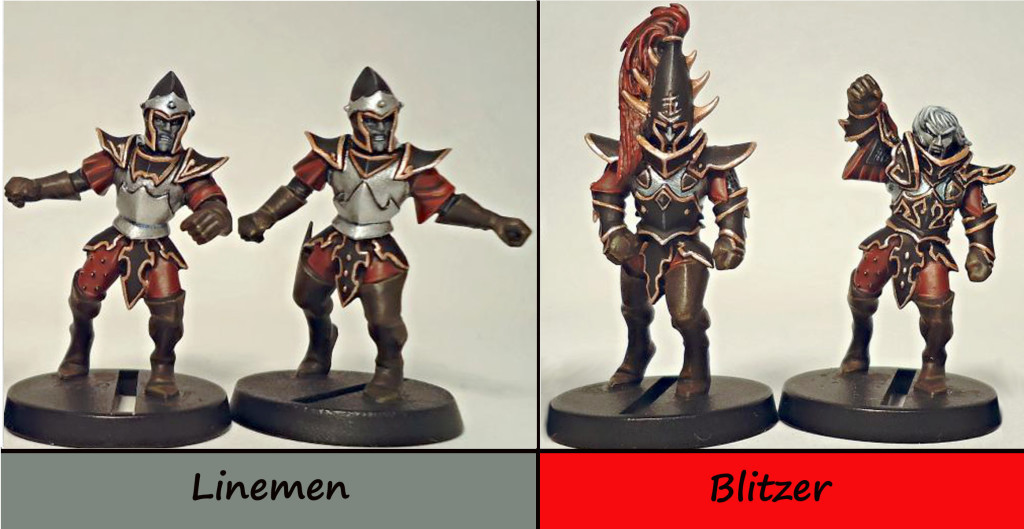 These players are all made from bits taken from the Dark Elf army list. They share legs from the corsairs and the linemen use standard spear infantry bodies. Since the blitzers are elites they got bodies from elite dark elf troops, cold one riders with heads and arms from black guard. Not only do they have more elaborately decorated armour but also more of it is painted black with gold edging.
These players are all made from bits taken from the Dark Elf army list. They share legs from the corsairs and the linemen use standard spear infantry bodies. Since the blitzers are elites they got bodies from elite dark elf troops, cold one riders with heads and arms from black guard. Not only do they have more elaborately decorated armour but also more of it is painted black with gold edging.
The same bodies are used for these dwarfs, but the blitzers were given heads and shoulder pads from elite iron breakers. They were given gauntlets and punch daggers from the 5th edition Blood Bowl humans to emphasise their role as heavy hitters. One change that could have been made was t paint the blitzers’ beards a dark brownish red to match their positional colour like the linemen.
Very similar parts were used on these models which made differentiating the blitzers tough. This was done mainly through poses, the blitzers having much more active positioning of their legs and arms compared to the static linemen. The blitzers were also given heads from the elite tomb guard along with forearm guards and different shoulder pads.
Both players are made from heavily converted daemons but to match the more aggressive role the blitzers are made from bloodletters. Not only are they posed more aggressively, but they also wear more armour and have darker skin.
Throwers/Runners
They are often an unpopular choice for some teams and it is not uncommon for to see only a single thrower or them left out entirely. Statwise throwers tend to be identical to linemen with passing access and an extra skill or 2. This means they aren’t much better than linemen aside from when it comes to throwing the ball and sometimes picking it up, which is a pretty rare occurrence for many coaches. Blitzers can be better ball carriers, relegating throwers to support roles or leader caddies. Runners are the fastest players on the team bar catchers, and tend to have less armour than linemen.
For some races in the fluff throwers are the brains of the team, equivalent to the quarterback and rivalling the blitzers as glory hogs. I see them as someone who can actually think and inspire the other players, though they may not always listen. If you are making a finesse team and going to have a team captain then a thrower is an alternative choice to a blitzer
Model Choice
Throwers are a difficult option since they are elite players but less combative than blitzers, generally they should look fancier than linemen. Since they tend to be well protected and don’t run about as much as some players then older looking models can be a good choice.
Runners are more defined by their role in the team, emphasising speed and mobility so have more in common with catchers.
If the army has specialist elite or characters then these can work as the basis for throwers, generally models that have unique abilities or inspire troops rather than being good in close combat. You may need to just use certain parts like heads or arms as these types of models often come with robes or specialist equipment that won’t suit Blood Bowl players.
Runners suit the light infantry and scout type models similar to catchers, though you may need to remove extra equipment they often come with.
Colouring/Decoration
White is the colour of throwers and can be assigned to runners too if they have pass access (norse runners have agility access). White is a very easy colour to add to models and should not disrupt their uniform too much. A white border or stripe is easy to add and giving the model white hair, beard or fur is another good way to distinguish them. Silver is also an option as this is often synonymous with white in heraldry.
Since they are “softer” than blitzers decoration you can go for more attractive aesthetics on them as opposed to intimating ones on blitzers or blockers. For norse and high elf throwers as well as dwarf runners I like wings on their helmets as these suggest flight, the wings also look good painted white.
Poses
Runners obviously suit running poses, their main role is to carry the ball and score touchdowns with the option of handing off or passing if things get tricky.
Throwers have more options, a common pose is pointing with 1 hand and the other holding the ball ready to throw. They also suit heads with open mouths and a cupped hand as if they are shouting instructions to the rest of the team.
As they rival blitzers in the glory-hog stakes then showing off poses are good as well. Pandering to the crowd or holding the ball against their hip in a relaxed pose waiting for an opening.
Armour/Equipment
The amount of armour worn by throwers should be similar to that of linemen, but slightly more impressive. Since they are they are usually safe in the backfield or in a cage they would have the cleanest and most pristine armour of the team.
Runner should look sleak and fast, avoiding any fancy ornamentation that could get caught or slow them down. They should have less armour than linemen as they tend to have lower AV and higher MA.
Both positionals benefit from holding the ball as they will have possession of it more than any other player.
The thrower was the only model in the team that wasn’t converted in some way. He was left with the smaller and bare head to represent his AV8. The pose and him holding the ball were enough to indicate he was a thrower.
The savage Orc throwers use Orc Shamans as the basis for their conversions. They were left with no shoulder pads to indicate being AV8. They were both modelled with throwing poses and one is holding the ball. The furs and skins on them were painted thrower white along with the player numbers.
This runner is unique in the team for having parts not from the Dark elf range. His torso is taken from wood elf wild riders and his legs and left arm from dark eldar. It was important he clearly had less AV than the linemen. This helps emphasise his greater speed as does the more sporty look of his leggings. This is topped off with him holding the ball ready to pass or dump off as needed.
There is little to differ the throwers from the Amazon linemen. The main changes are the poses, one is holding the ball whilst the other is pointing with arm raised. The main change in decoration is that both throwers have headdresses, painted in thrower white.
As this team can be used as either norse or dwarfs then the throwers were modelled for use as runners. The thrower/runner on the left is pointing and shouting, he also has a winged helm, his beard has been painted thrower white too. The 2nd thrower/runner has a mask with lens to help him see better and is holding the ball.
Throwers often take the leader skill and tend not to see as much action as other players, this means models that are used as advisors or leaders in armies are good sources for conversion. Such is the case here where liche priest heads and arms were used. They were modelled in throwing poses as well.
These throwers have similar equipment to their linemen counterparts but with more detail on their wrist guards and chests. The big difference is their helms with the winged helms, these have been painted with white and blue stripes whilst the linemen had yellow and blue stripes. Finally one has been modelled pointing and giving instructions whilst the other is in a throwing pose.
Catchers
The fastest and most agile players on the team, they use their speed and mobility to stay out of trouble. This is because they are also the most vulnerable, with lower strength and armour which makes them key targets.
Catchers emphasise speed and agility, oddly on some teams they tend not to do a lot of catching and can end up fulfilling the role of a runner or even blitzer (high and pro elfs) if the team does not have access to many of them.
Model Choice
They should be the opposite of blockers, slim, light and with little or no armour. Like runners they tend to go for practicality and will have more skin exposed than any other player.
They tend to have stats very different from linemen and so can shift drastically in look to reflect that.
If picking from an existing army then scouts can be a good choice, though these often have cloaks or equipment that would not be practical for catchers. Ironically any basic militia troops in the army can be the best choices as they will tend to have little armour and be slimmer and less muscled. This makes them easier to convert as you only need to add a couple of bits of Blood Bowl kit such as a cather’s mitt or shoulder pads to transform them.
Colouring/Decoration
Yellow is the colour of catchers and this is a pretty easy colour to add as it contrasts well with most of the main uniform colours. You can use gold as well since it is close to yellow, but that might be better used on blitzers. Blonde hair is a great way to make catchers stand out if the rest of the team is brunette or grey and they are the most likely to not wear helmets.
Poses
By far the best way to make them stand out is in catching poses, them running, jumping or diving can all make for fantastic looking models. Catchers are one of the easiest players to model, often all you need it to find a suitable open hand for them and have them with 1 or more arms raised. Clever positioning of the head can make them look like they are watching the ball as it comes in.
Armour/Equipment
They will have the least armour in the team, even if statwise they have the same AV as linemen less armour helps suggest speed and agility. A single shoulder pad is common, usually on the opposite shoulder to their preferred catching arm. Knee and elbow pads can be a good idea since they are likely to do a lot of diving. Otherwise they should have little armour, favouring clothing or bare flesh. Helmets are optional, but they would be the least likely to be taken on the team. Loin cloths make good decoration, whilst maintaining their fragile look since they add little in the way of protection.
An obvious bit of equipment is catching mitts, if you are skilled these can be modelled but the other solution is to cut them from another model.
The Amazons show the cool dynamic poses you can model on your catchers. Them being given dark eldar scourges legs would be enough, with the addition of Impact catching mitts going even further. To further emphasise their differences they were modelled with feathered decoration.
The runner in the Norse team sort of fits the catcher role as they do have the highest movement and agility access. Slayer models were used with one in a running pose and the other with a catching mitt. They were given catcher yellow beards to represent their agility access.
The catchers were differentiated from the linemen mainly through poses, they are all modelled running or jumping. Larger hands have been used, better for catching and modelled ready to receive a pass. I chose heads with longer hair for an extra difference, though long hair is not an innate catcher characteristic.
Specialists
There are a few players that don’t really fit into any obvious category such as; assassins, trollslayers, witch elves, ulfwereners and goblin secret weapons. The good thing is they have very distinct characteristics which can make them easier to model. Many of these are direct copies of existing troops and can be easily converted from them with a weapon snip, assassins don’t even need this.
There is no defined colour for specialists, you can either miss this out or pick one of the common colours not already used; black, blue, orange, purple and pink would all work.
Their poses, look and equipment are very much defined by the specialised role making it hard to generalise. It is very much a case of deciding on the player and team, the one key thing is that they should be obviously different from the rest of the team.
The witch elves stand out not only from being female on an all male team but also with the dynamic poses and lack of armour to show them being AV7. The assassin uses the shade model and the cloak as well as daggers along with lack of armour represent his abilities.
These models are meant to be used as either Ulfwereners or Trollslayers. The lack of armour and orange hair is enough to show them being slayers. Whilst their bestial features, fur and claws are enough to show them being Ulfwereners.
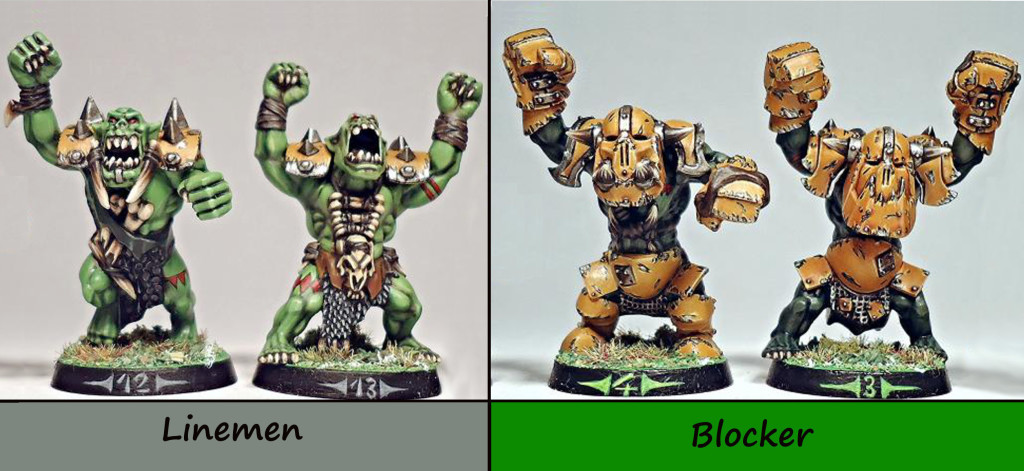
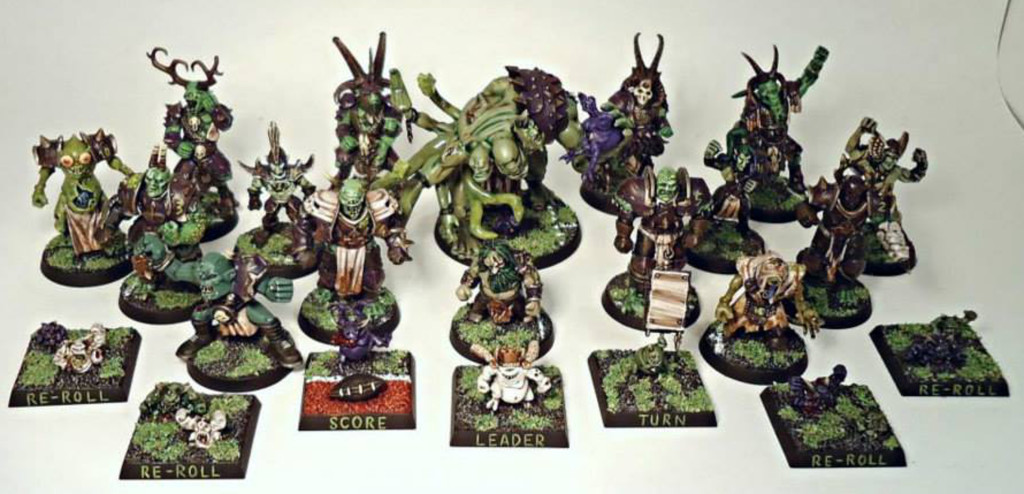
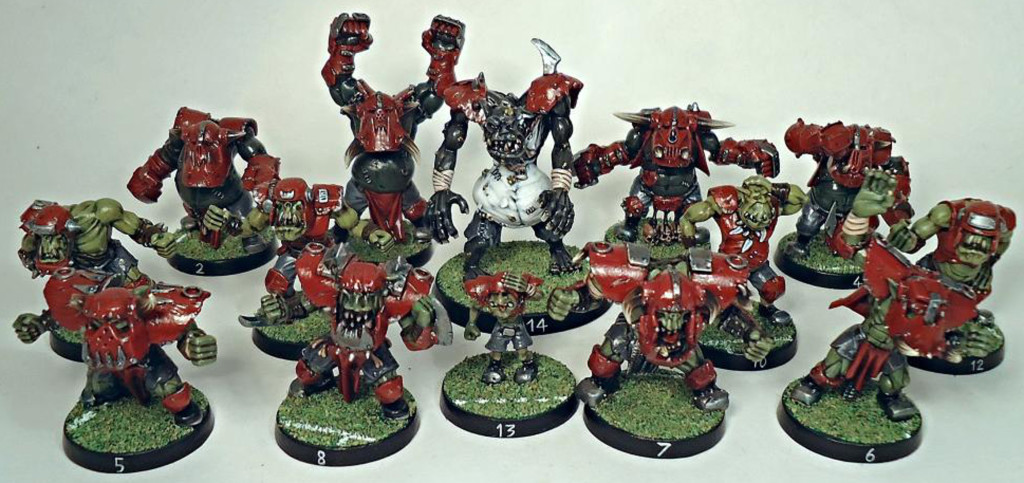
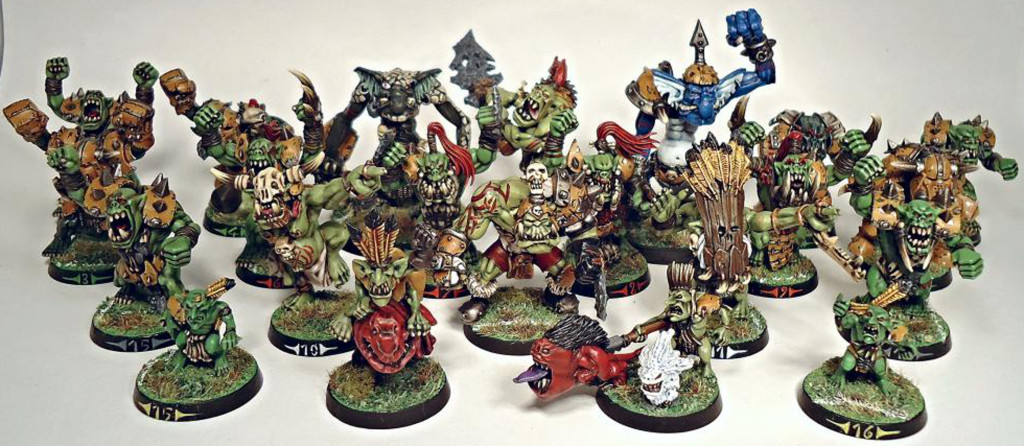
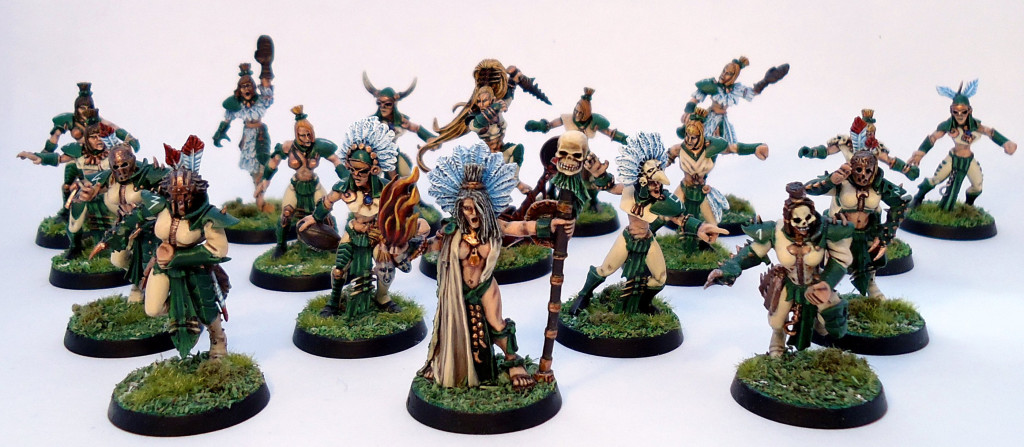
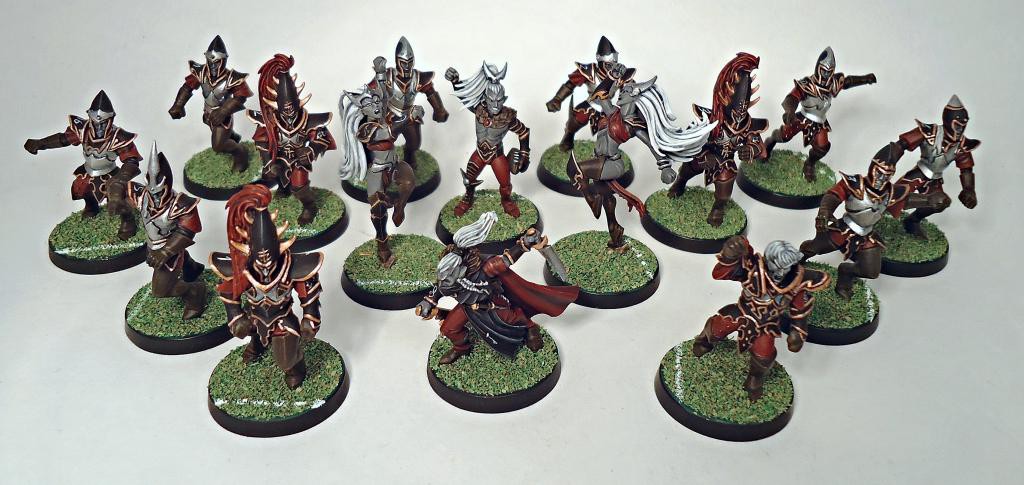
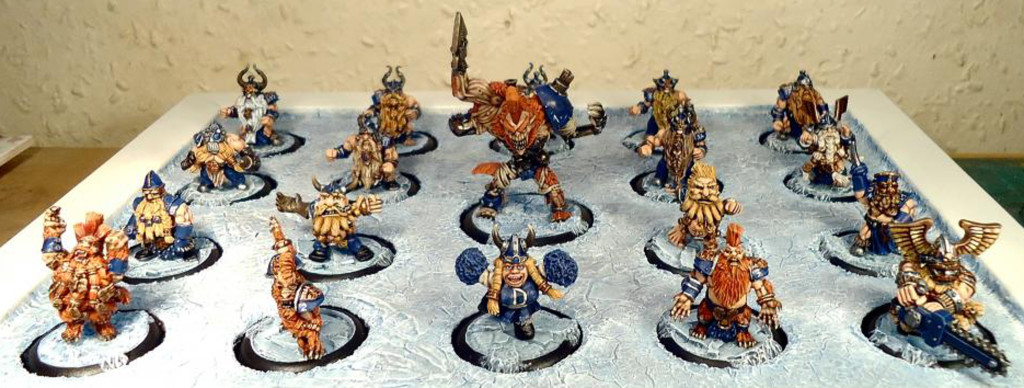
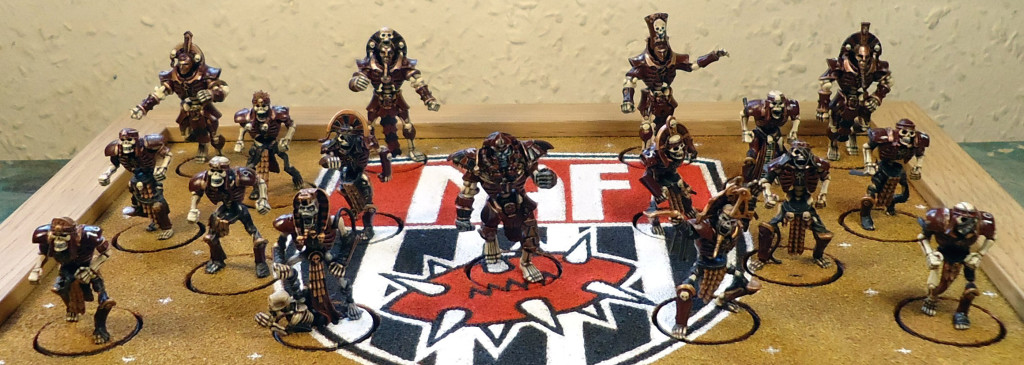
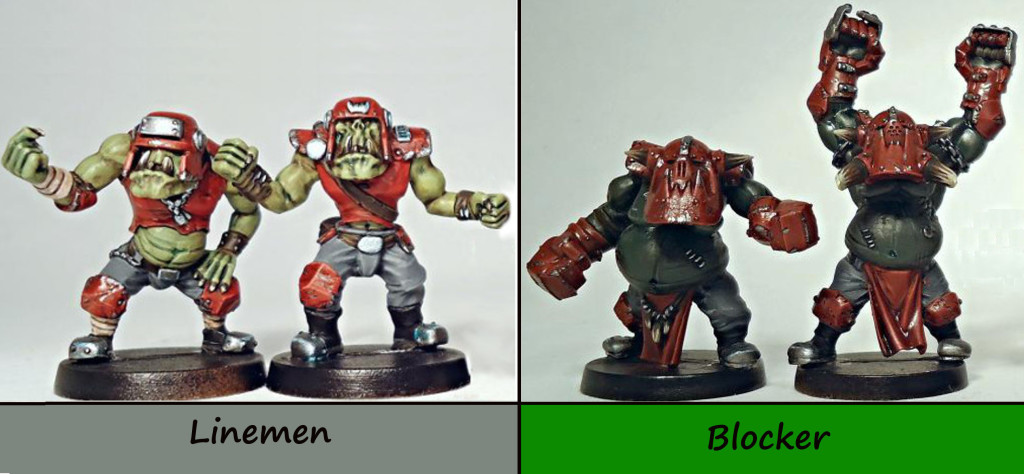

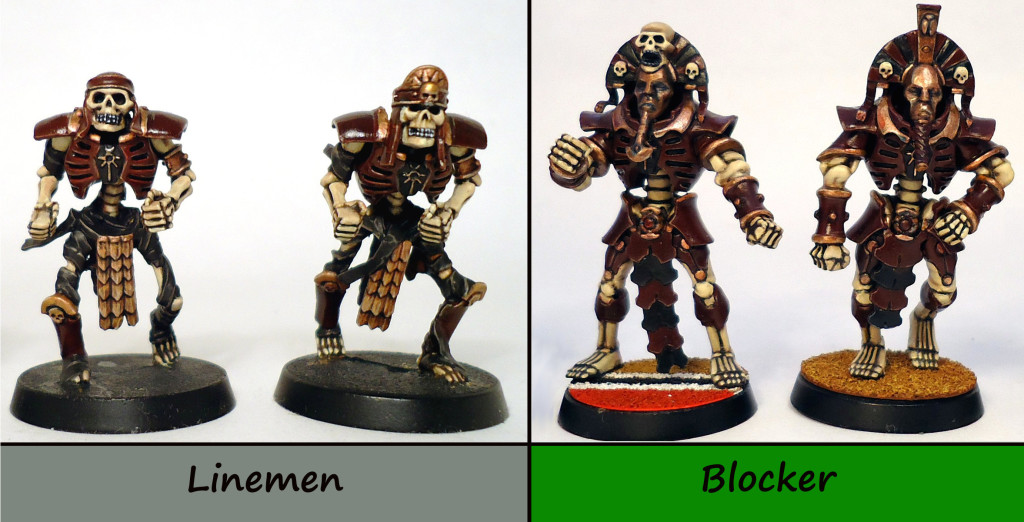
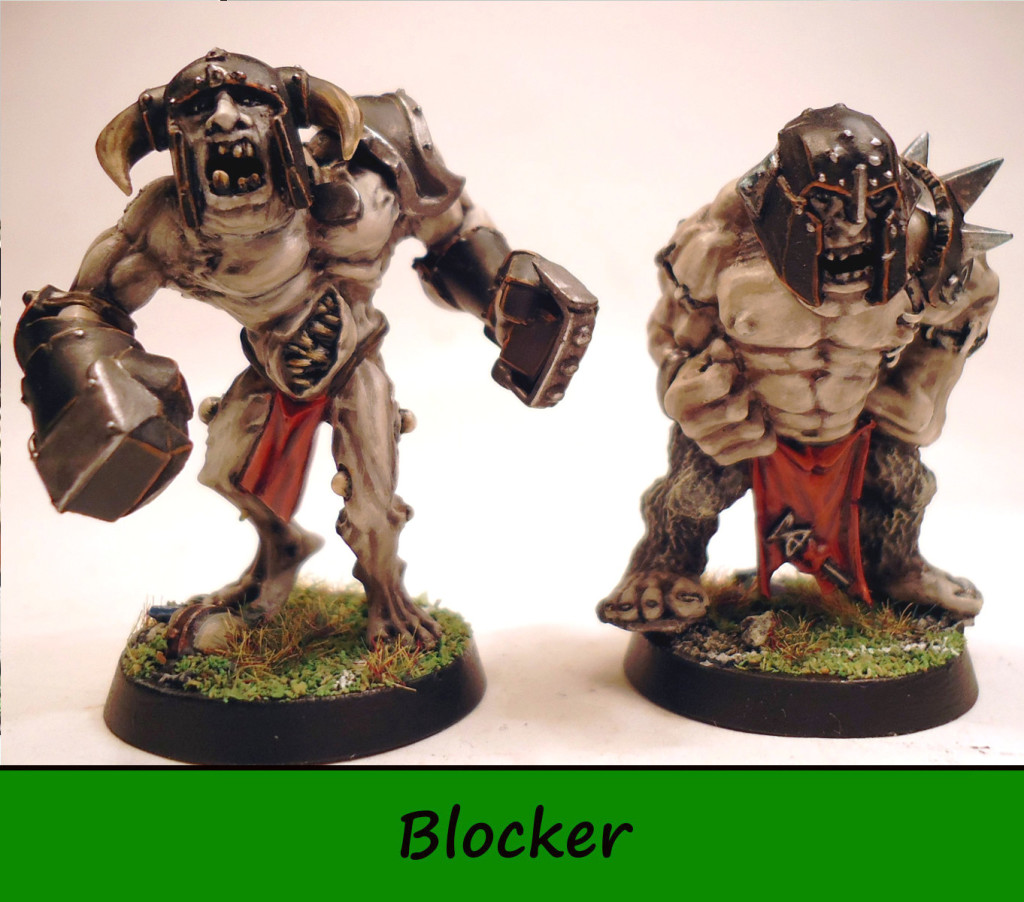
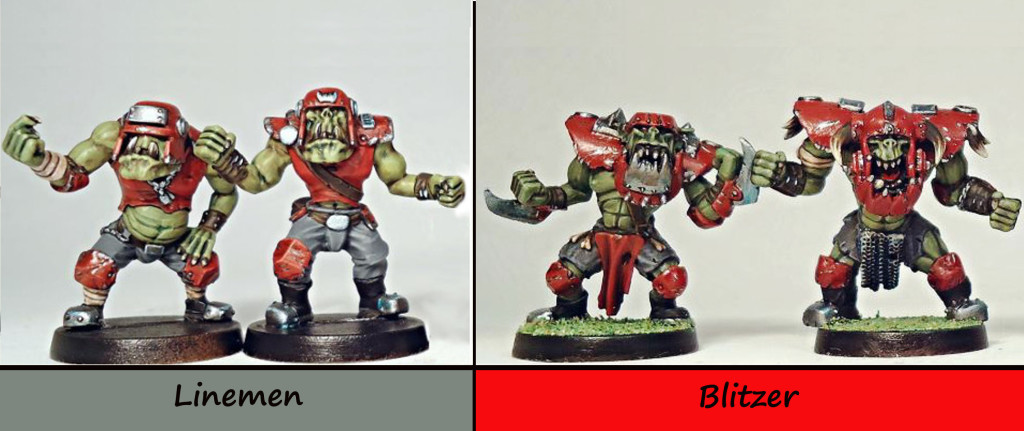
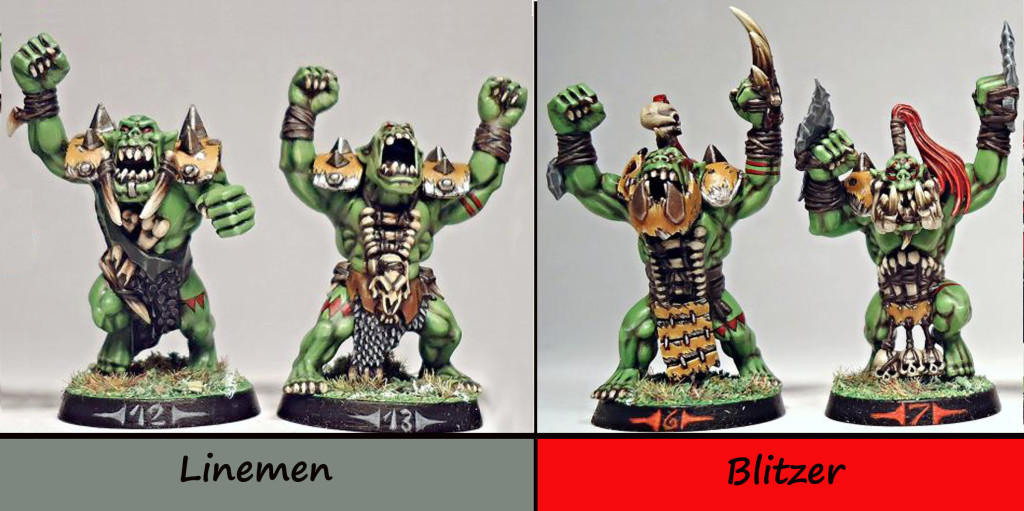
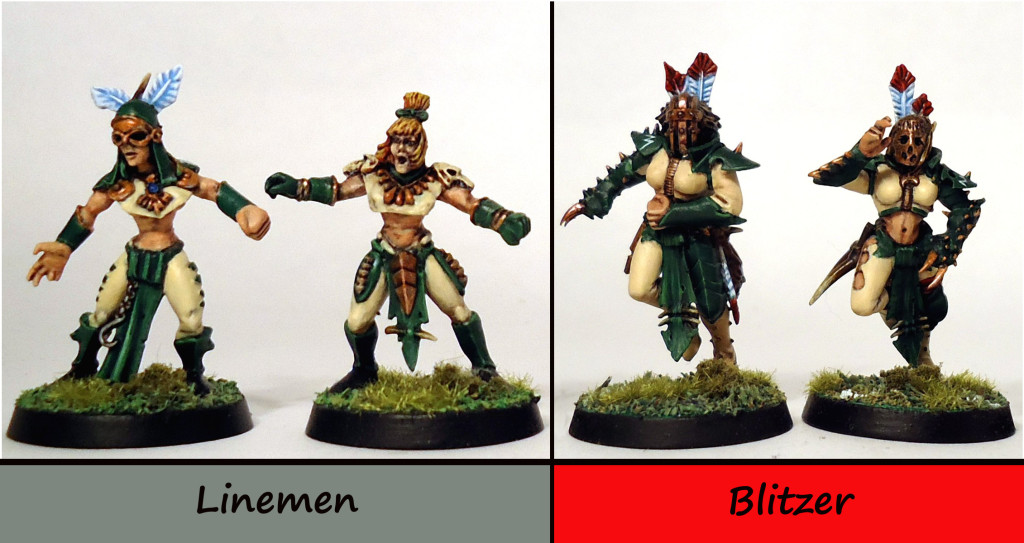
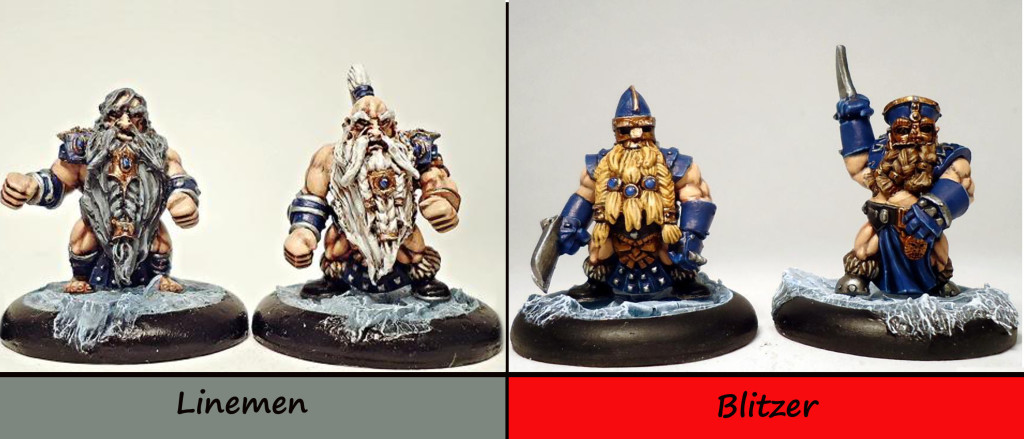
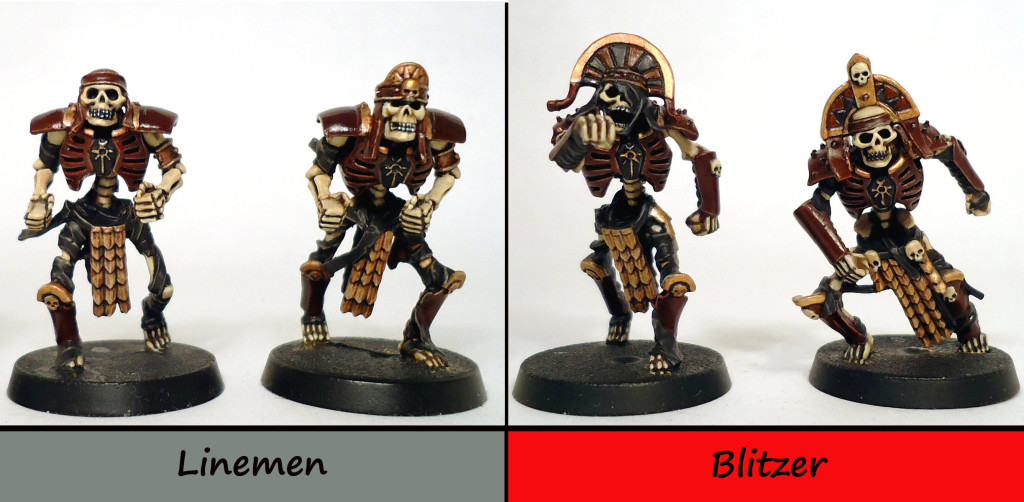
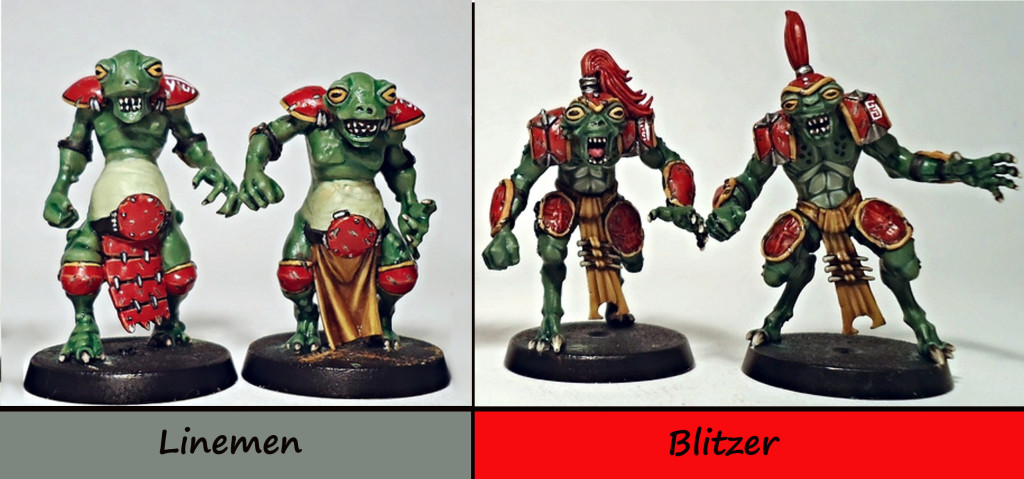
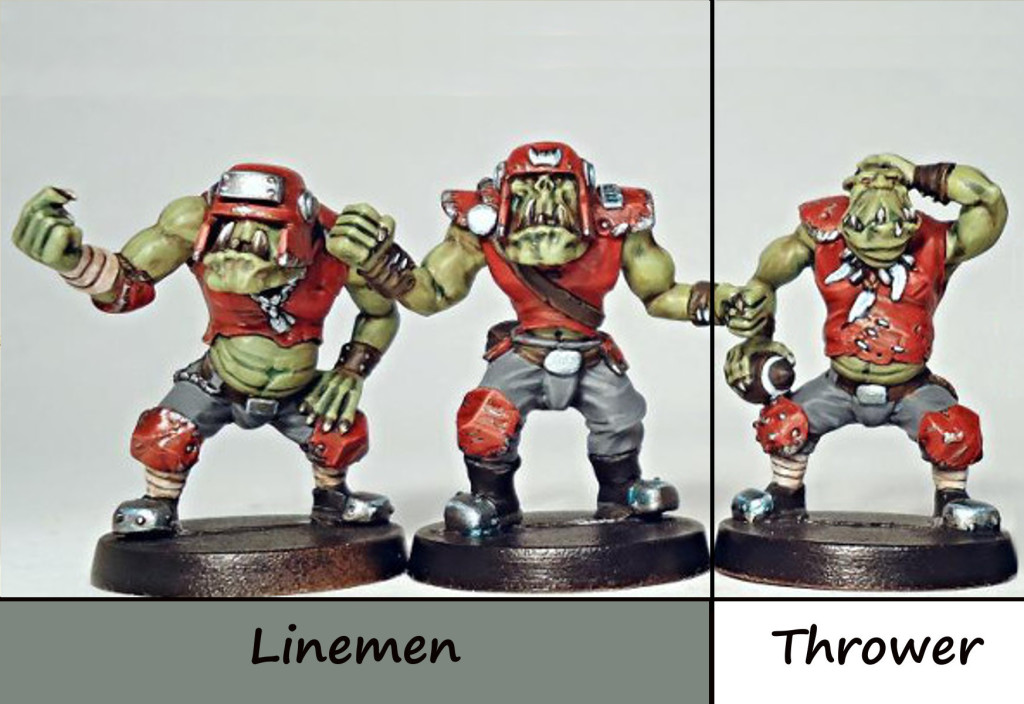
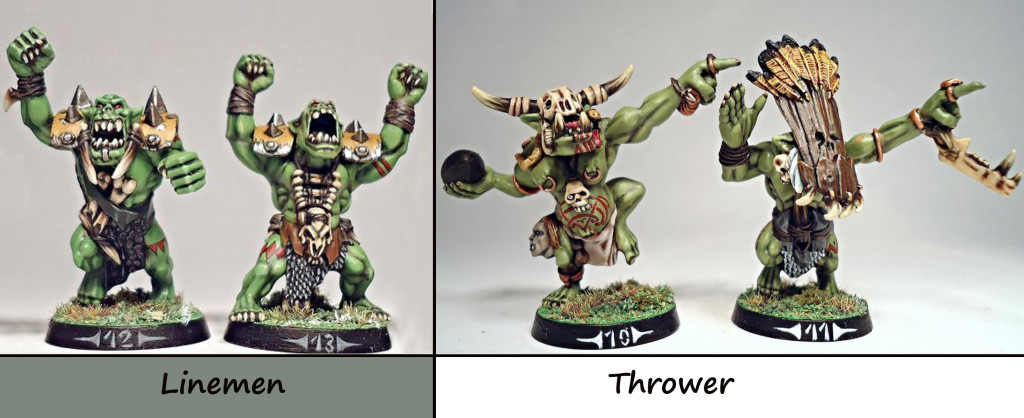
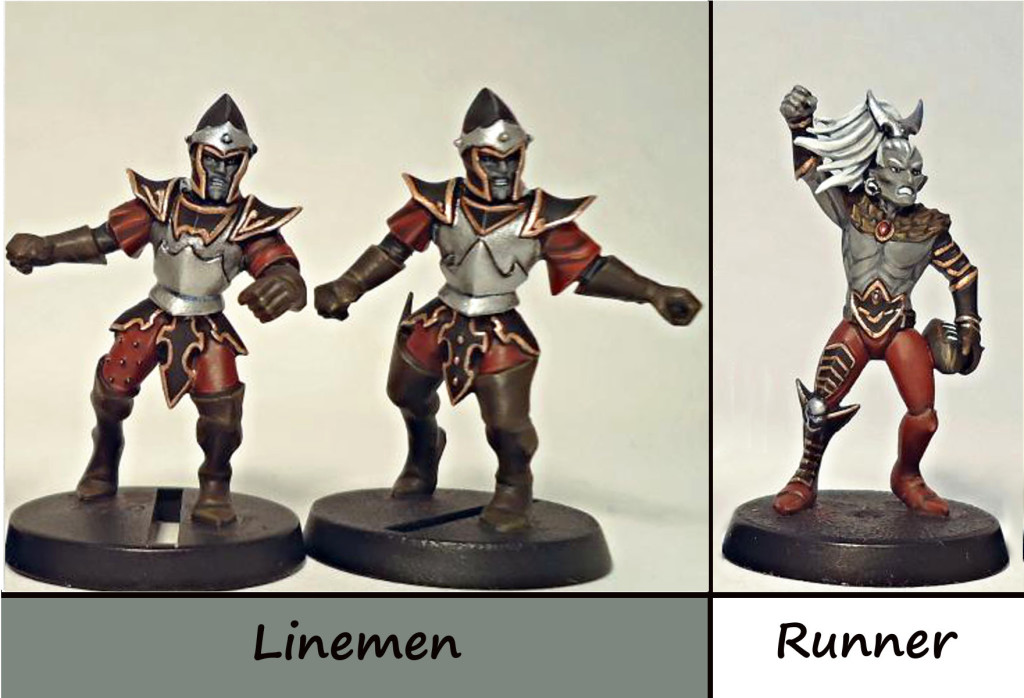
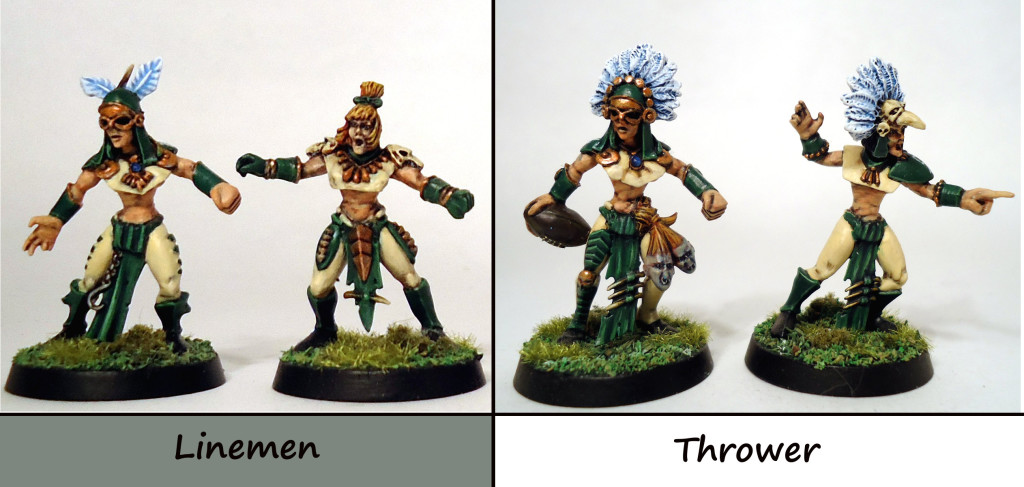
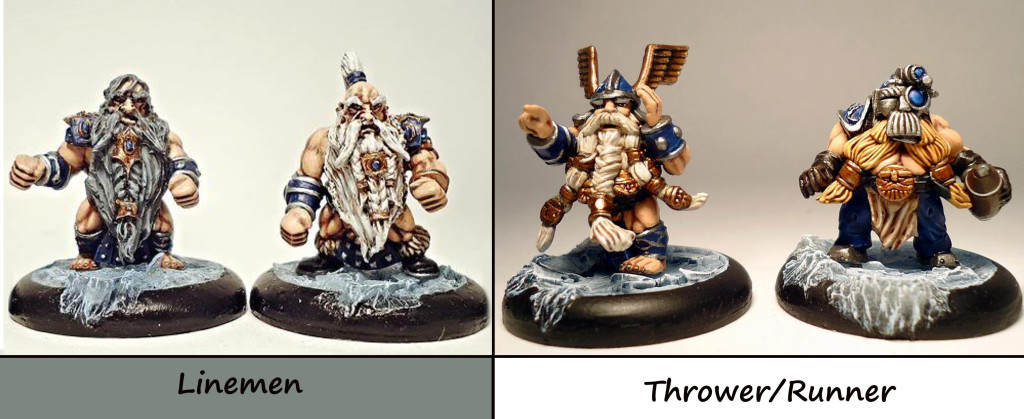
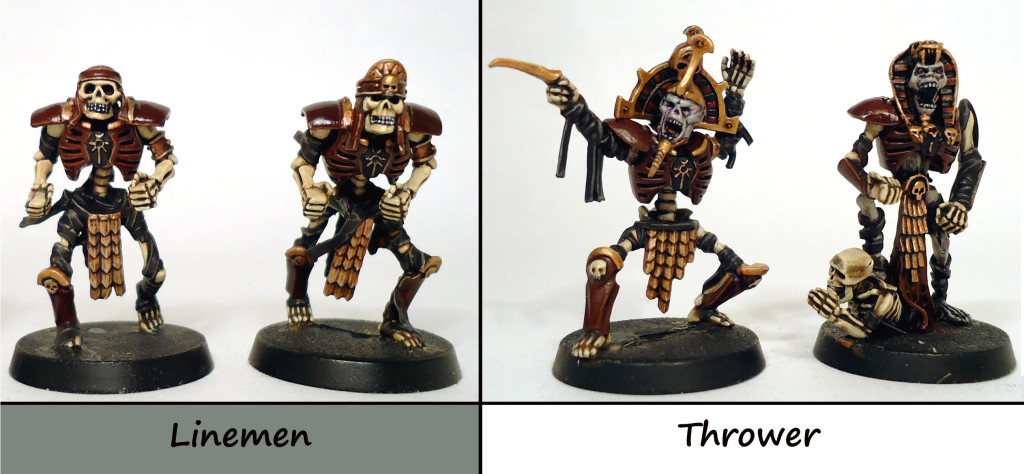
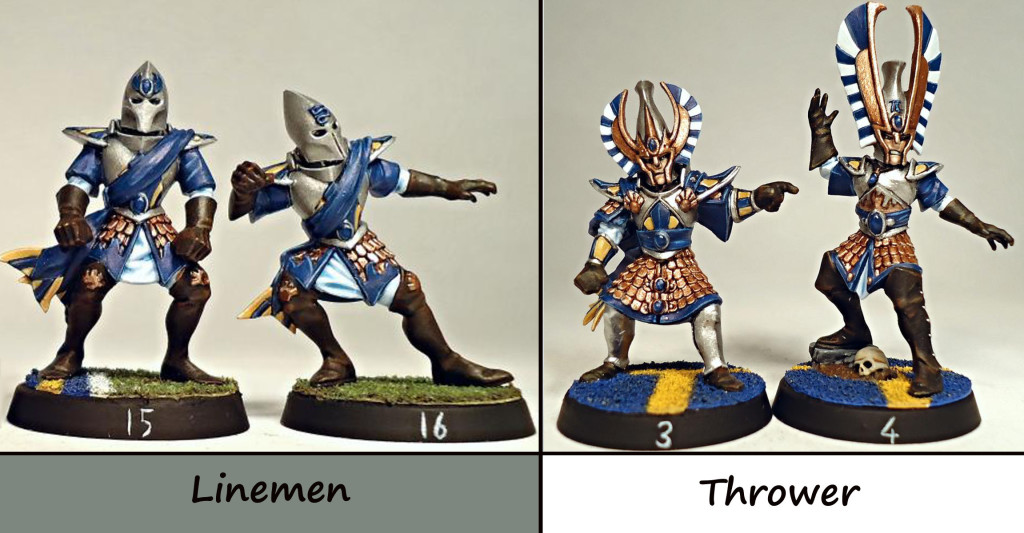
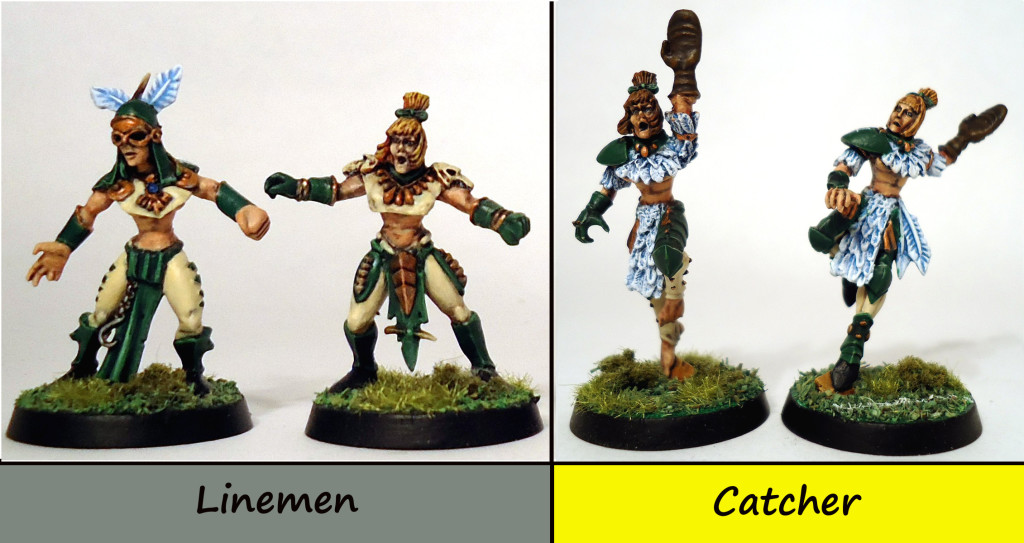
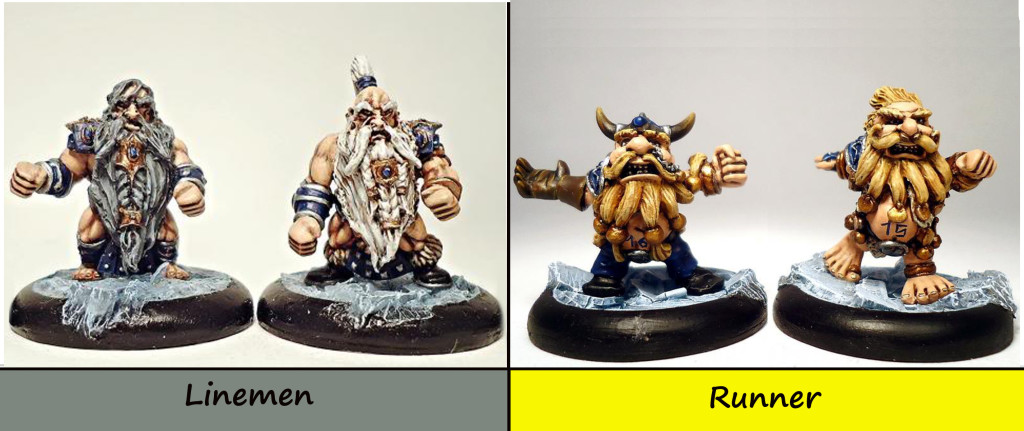
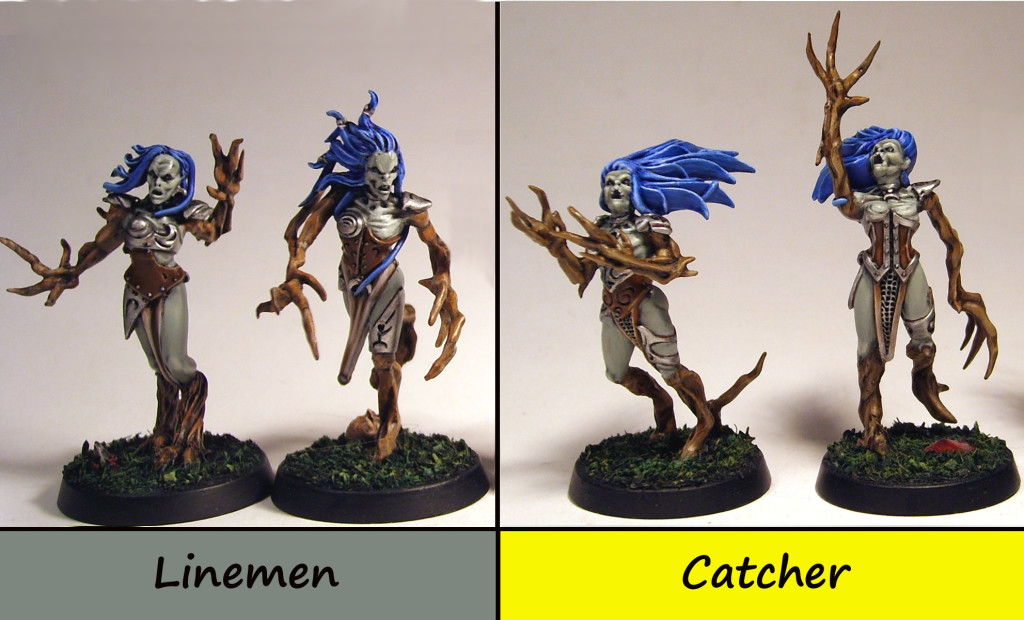
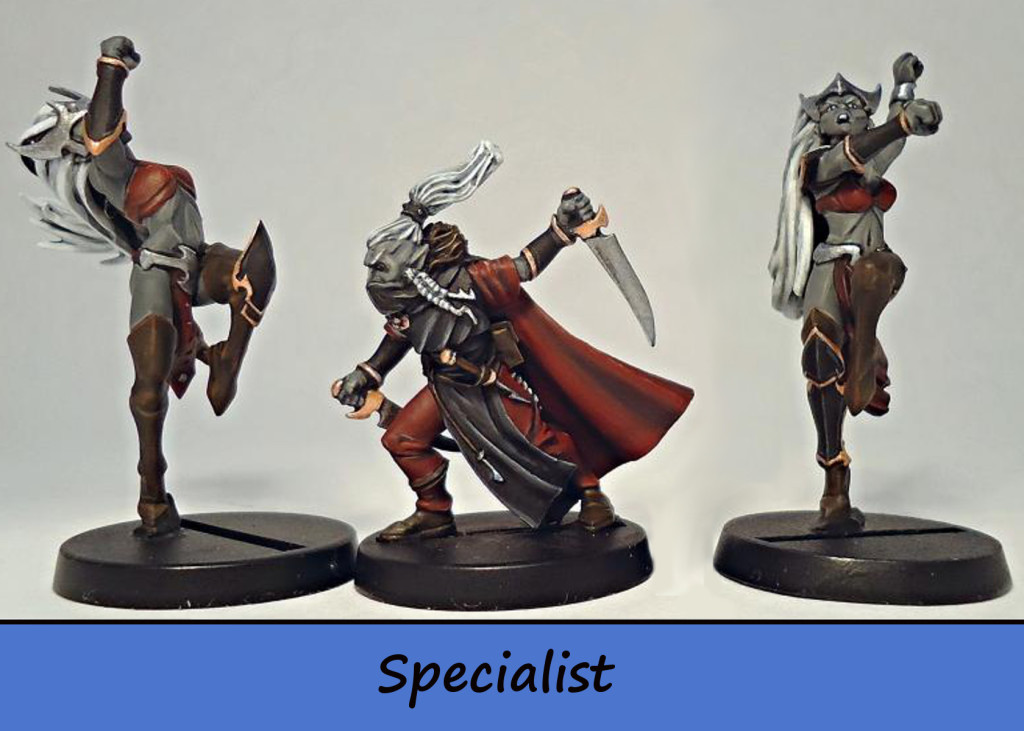
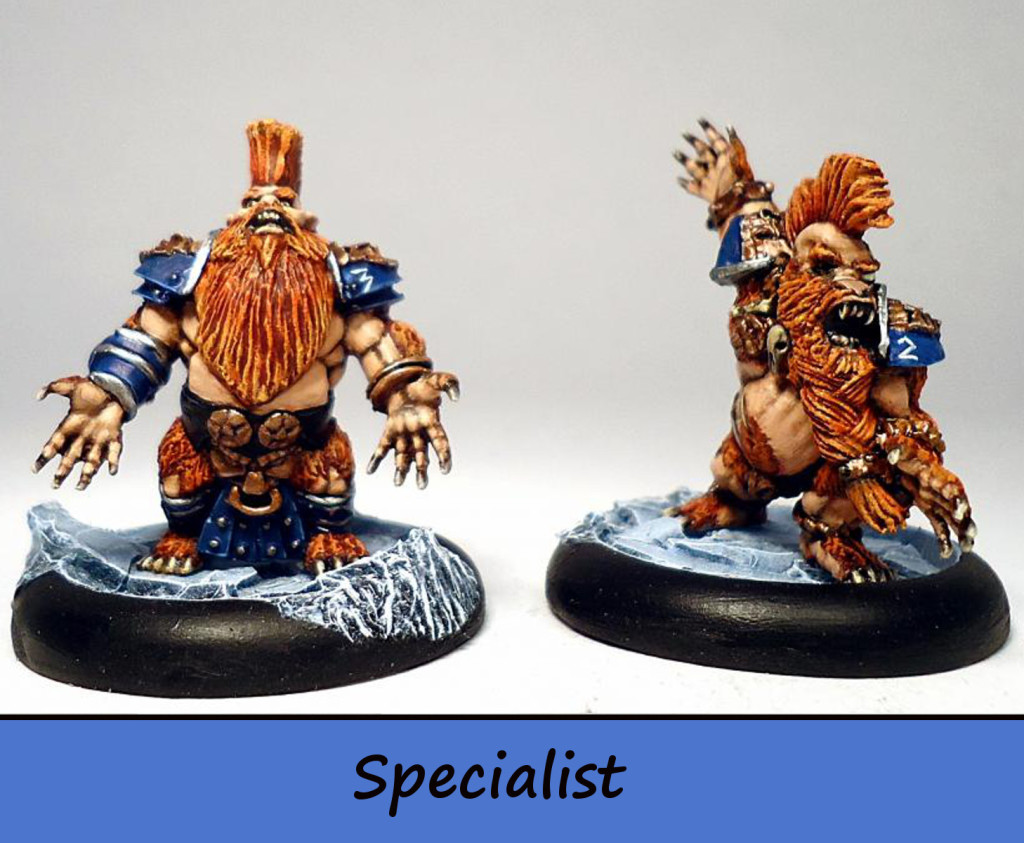
Awesome report! Enjoyed reading it immensly!
Sadly, it shows what a long way I still have to go… ;D